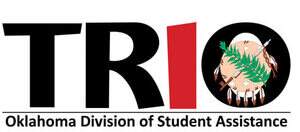TRIO FAQ

The TRIO programs were the first national college access and retention programs to address the serious social and cultural barriers to education in America. (Previously only college financing had been on policymakers' radar.) TRIO began as part of President Lyndon B. Johnson's War on Poverty. The Educational Opportunity Act of 1964 established an experimental program known as Upward Bound. Then, in 1965, the Higher Education Act created Talent Search. Finally, another program, Special Services for Disadvantaged Students (later known as Student Support Services), was launched in 1968. Together, this trio of federally-funded programs encouraged access to higher education for low-income students. By 1998, the TRIO programs had become a vital pipeline to opportunity, serving traditional students, displaced workers, and veterans. The original three programs had grown to nine, adding Educational Opportunity Centers and Veterans Upward Bound in 1972, Training Program for Federal TRIO programs in 1976, the Ronald E. McNair Post-baccalaureate Achievement Program in 1986, Upward Bound Math/Science in 1990, and the TRIO Dissemination Partnership in 1998.
As mandated by Congress, two-thirds of the students served must come from families with incomes at 150% or less of the federal poverty level and in which neither parent graduated from college. More than 2,800 TRIO projects currently serve close to 790,000 low-income Americans. Many programs serve students in grades six through 12. Thirty-five percent of TRIO students are Whites, 35% are African-Americans, 19% are Hispanics, 4% are Native Americans, 3% are Asian-Americans, and 4% are listed as "Other," including multiracial students. More than 7,000 students with disabilities and approximately 6,000 U.S. veterans are currently enrolled in the TRIO programs as well.
 More than 1,000 colleges, universities, community colleges, and agencies now offer
TRIO Programs in America, the Caribbean, and the Pacific Islands. TRIO funds are distributed
to institutions through competitive grants.
More than 1,000 colleges, universities, community colleges, and agencies now offer
TRIO Programs in America, the Caribbean, and the Pacific Islands. TRIO funds are distributed
to institutions through competitive grants.
The United States needs to boost both its academic and economic competitiveness globally. In order to foster and maintain a healthy economy as well as compete globally, the United States needs a strong, highly-educated, and competent workforce. To be on par with other nations, the country needs students, no matter their background, who are academically prepared and motivated to achieve success.
Low-income students are being left behind. Only 38% of low-income high school seniors go straight to college as compared to 81% of their peers in the highest income quartile. Then, once enrolled in college, low-income students earn bachelor's degrees at a rate that is less than half of that of their high-income peers 21% as compared with 45%.
The growing achievement gap in our country is detrimental to our success as a nation. There is a tremendous gap in educational attainment between America's highest and lowest income students despite similar talents and potential. While there are numerous talented and worthy low-income students, relatively few are represented in higher education, particularly at America's more selective four-year colleges and universities. While nearly 67% of high-income, highly-qualified students enroll in four-year colleges, only 47% of low-income, highly-qualified students enroll. Even more startling, 77% of the least-qualified, high-income students go on to college, while roughly the same proportion of the most-qualified low-income students that go on to college. (ACSFA 2005).
